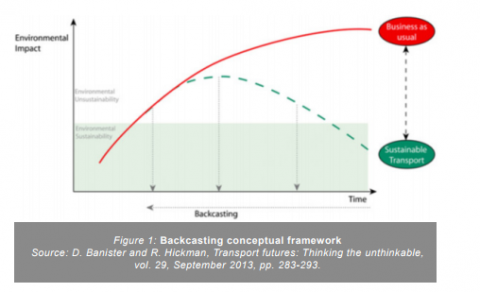SMART-MR: transition towards low-carbon mobility planning

Are you interested in the issues of soft-mobility and transportation? Then follow our Interreg reporter on a story on SMART-MR project.
Transportation represents a big share of greenhouse gases emissions in the EU 28 (24.4% out of which 71.9% are generated by road transportation). It embodies an important issue to tackle in the shift towards low-carbon economy, especially in the big metropolitan regions where the issues of congestions, greenhouse gases emissions and commuters are the most striking, and at the level of which any transportation policy plan should apply.
In that sense, there is a change of scale to tackle the urban transport policy issue. This issue is also at the centre of the Europe 2020 strategy to reduce greenhouse gases emissions and to increase the share of renewable energy consumption by 20%.
In this context, the SMART-MR project, born from the ashes of the Interreg IVC project CATCH-MR, is trying to improve urban transport policy plans and to provide sustainable measures for resilient low-carbon transportation and mobility at metropolitan regions’ level to provide healthy living conditions for inhabitants and to support environments for businesses’ growth.
The SMART-MR project partnership gathered ten partners from eight different metropolitan regions:
- Capitals: (Ljubljana in Slovenia – the lead partner, Oslo in Norway, Helsinki in Finland, Budapest in Hungary and Rome in Italy);
- Regional hubs (Goteborg in Sweden, Porto in Portugal and Barcelona in Spain).
The project ensured a nice balance between eastern, western, northern and southern European metropolitan regions.
The project partners will organise seven interregional workshops related to four themes between 01/04/2016 and 31/03/2019:
- Providing methods and tools for participatory transport planning
- Translating urban mobility plans to the metropolitan region’s level
- Deploying solutions for low-carbon station areas as intermodal nodes and areas of low-carbon freight and services
- Supporting sharing economy and innovative transport management for new sustainable modes of people’s mobility.
Each workshop will be preceded by surveys to be filled by each metropolitan region, which will provide in-depth analysis on how the workshop’s topic affects and is dealt with by the different partners, in order to prepare for fruitful exchange of experience. Two representatives and two most relevant stakeholders will attend the seven workshops, which will result in analytical support for action, policy recommendations, and final good practices guide.
So far, four thematic workshops have been carried out. The second one, which was held in Rome on 21 and 22 March 2017, focused on innovative ways to create a mobility plan at the metropolitan region’s level. The Lazio Regional Plan is innovative in two different ways:
- It uses backcasting methods instead of forecasting. Meaning that, instead of trying to foresee what mobility and transportation will look like in Rome in the upcoming years and what will be the challenges to tackle, the Lazio mobility plan focuses on what the metropolitan authority believes should be the ideal situation in the future and the ways (policies) to reach it.

Source: SMART-MR newsletter on creating a mobility plan
- There is a shift in this mobility plan between a traffic-based analysis (which performance evaluation is based on transportation modes travel speeds and costs), to an accessibility-based analysis, where performance evaluation is based on people and businesses’ ability to reach desired services and activities.
If you want any further information on the results of the workshops, check the newsletter which is available in the SMART-MR library.
